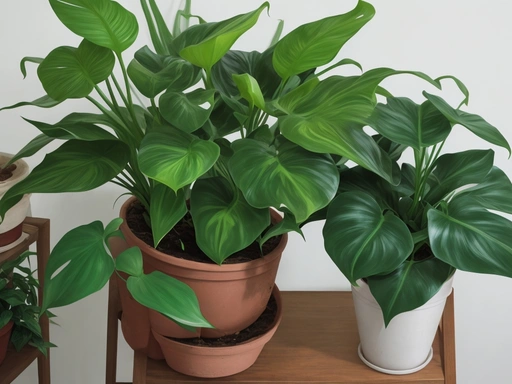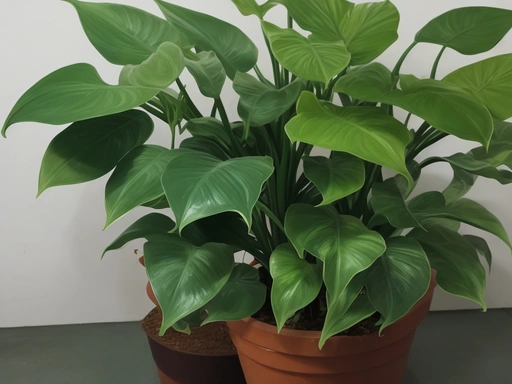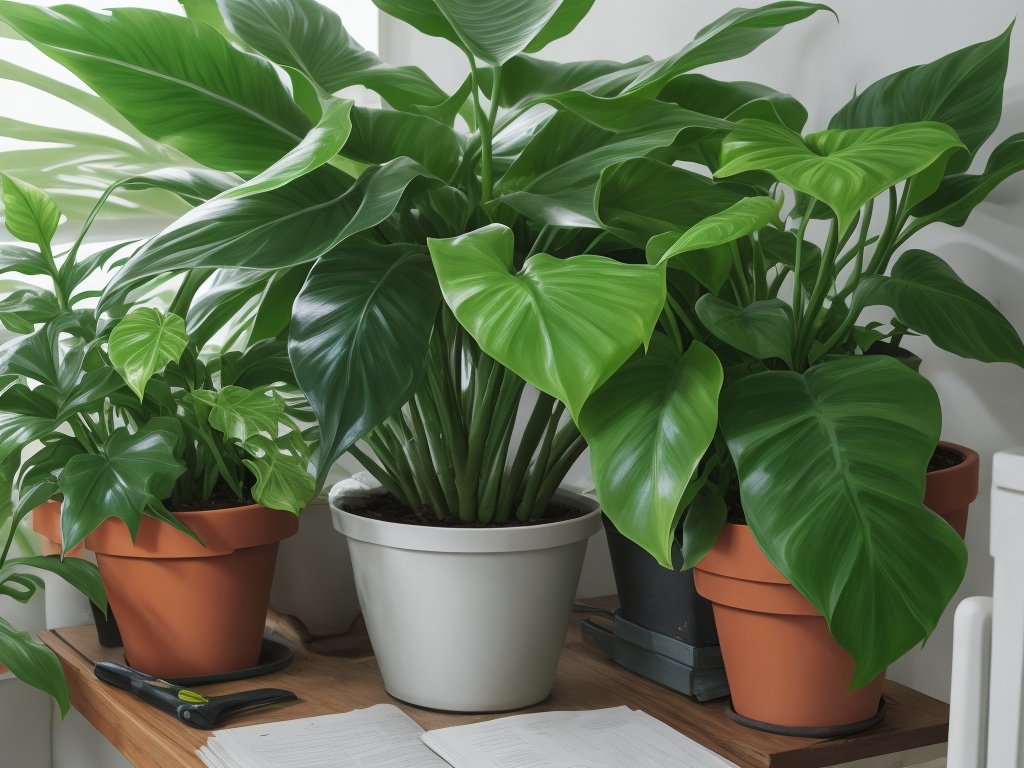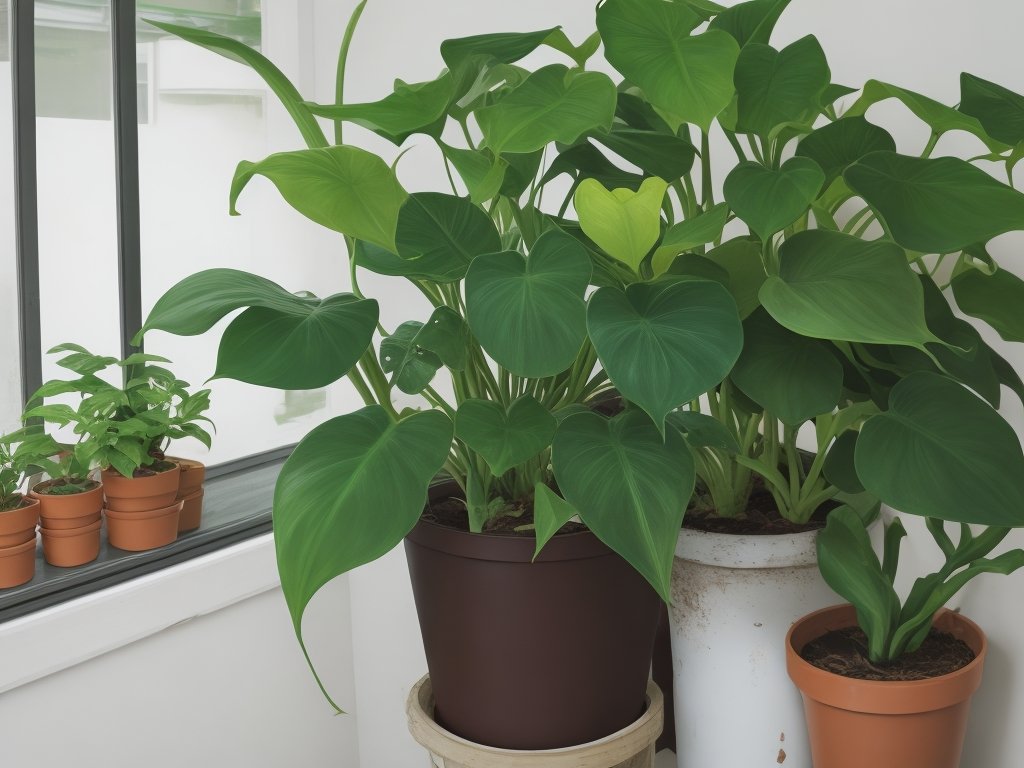Philodendron Soil Mix for Lush Greenery – Perfect for Your Indoor Jungle
Key Takeaways:
- A well-draining soil mix is essential for the healthy growth of your Philodendron plant.
- Use a combination of peat moss, perlite, and potting soil for an ideal Philodendron soil mix.
- Avoid using heavy or compacted soil as it can lead to root rot in Philodendron plants.
- Regularly monitor the moisture level in the soil and adjust watering accordingly to prevent overwatering or drying out.
Are you ready to take your indoor plant game to the next level? Well, it’s time to dive into the world of Philodendrons and their soil mix.
Whether you’re a seasoned plant parent or just starting out, finding the right soil mix for your Philodendron is crucial for its overall health and growth.
In this article, I’ll walk you through everything you need to know about creating the perfect soil mix for your Philodendron, including the optimal pH level, drainage requirements, and nutritional needs. So, let’s get our hands dirty and give your beloved Philodendrons the soil they deserve!
| Ingredient | Amount | Benefits |
|---|---|---|
| Peat Moss | 1 part | Retains moisture |
| Perlite | 1 part | Improves drainage |
| Coconut Coir | 1 part | Retains moisture |
| Worm Castings | 1/2 part | Provides nutrients |
| Compost | 1/2 part | Improves soil fertility |
What is Philodendron?
Philodendron is a popular houseplant known for its lush, green foliage and easy care requirements.
Popular Philodendron varieties
Popular Philodendron varieties include the Heartleaf Philodendron (Philodendron hederaceum), the Brasil Philodendron (Philodendron hederaceum ‘Brasil’), the Monstera Deliciosa (Philodendron pertusum), the Xanadu Philodendron (Philodendron Xanadu), and the Split-Leaf Philodendron (Philodendron bipinnatifidum).
Each variety offers unique leaf shapes, sizes, and colors, allowing you to choose the perfect one for your indoor jungle.

Importance of Choosing the Right Soil Mix
Choosing the right soil mix is essential for the healthy growth and development of your Philodendron plant.
The role of soil in plant growth
The soil plays a crucial role in plant growth. It provides a medium for roots to anchor themselves and absorb water and nutrients.
The soil’s texture affects drainage and aeration, allowing roots to breathe.
It also acts as a reservoir for essential minerals and organic matter that plants need to thrive. Choosing the right soil mix for your Philodendrons is essential for their overall health and growth.

Why Philodendrons require specific soil conditions
Philodendrons require specific soil conditions because it helps to mimic their natural habitat and provide the necessary nutrients for their growth. The right soil mix ensures optimal pH levels, proper drainage, and sufficient nutrients.
Philodendrons thrive in well-draining soil that retains some moisture, allowing their roots to breathe.
Nutrient-rich soil supports their overall health and encourages healthy foliage and root development.
Characteristics of a Good Philodendron Soil Mix
The characteristics of a good Philodendron soil mix include an optimal pH level, adequate soil drainage, and the right nutritional balance.
Optimal pH level for Philodendrons
The optimal pH level for Philodendrons is around 5.5 to 6.5. This slightly acidic range allows for better nutrient uptake and overall plant health. Testing the pH level of the soil is important to ensure it meets the specific needs of your Philodendron.
Adjustments can be made using products like peat moss or sulfur if necessary.

Soil drainage requirements for Philodendrons
Philodendrons thrive in well-draining soil that allows excess water to flow away from the roots.
Poor drainage can lead to root rot and other issues.
To meet their drainage requirements, you can use a soil mix that contains materials like perlite or pumice to improve drainage.
Adding these materials will help prevent waterlogged soil and promote healthy growth for your Philodendrons.
Nutritional needs of Philodendrons
Philodendrons have specific nutritional needs to thrive.
They require a balanced supply of macronutrients like nitrogen, phosphorus, and potassium.
Additionally, they need micronutrients like iron, manganese, and zinc.
You can provide these nutrients through a well-rounded fertilizer formulated specifically for foliage plants.
Regular fertilization during the growing season is essential to keep your Philodendrons healthy and promote optimal growth.
Avoid over-fertilizing, as it can lead to nutrient burn and other issues.

Creating Your Own Philodendron Soil Mix
Creating your own Philodendron soil mix involves understanding the essential components and mixing proportions.
Essential components for a homemade soil mix
The essential components for a homemade soil mix for Philodendrons include:
- Peat Moss: Helps retain moisture and provides good aeration for the roots.
- Perlite: Improves drainage and prevents the soil from becoming compacted.
- Compost: Adds organic matter and nutrients to the soil.
- Orchid Bark: Enhances drainage and aeration while retaining some moisture.
- Coconut Coir: Improves water retention and prevents soil from drying out too quickly.
- Vermiculite: Helps retain moisture and improves soil structure.
- Sand: Enhances drainage and prevents the soil from becoming waterlogged.
- Worm Castings: Provides beneficial microorganisms and nutrients for plant growth.
- Potting Soil: Can be used as a base for the soil mix, providing some nutrients and organic matter.
Mix these components in the right proportions to create a well-draining and nutrient-rich soil mix for your Philodendrons.
Mixing proportions and guidelines
Mixing proportions and guidelines are crucial when creating your own Philodendron soil mix. A good ratio to follow is 1 part peat moss or coco coir, 1 part perlite or vermiculite, and 1 part well-draining soil like potting mix or orchid bark.
Additionally, adding in organic matter such as compost or worm castings can provide extra nutrients for your plants.
Remember to ensure proper drainage by adding materials like perlite or vermiculite and avoid overcompacting the soil.
Buying a Pre-made Philodendron Soil Mix
Looking to save time and effort? Consider buying a pre-made Philodendron soil mix.
Benefits of buying pre-made soil mix
Buying a pre-made soil mix for your Philodendron plants can offer several benefits.
Firstly, it saves you time and effort as you don’t have to gather and mix the ingredients yourself.
Secondly, pre-made soil mixes are specifically formulated to meet the unique nutritional and drainage needs of Philodendrons.
This ensures that your plants receive the right balance of nutrients and moisture.
Additionally, commercial soil mixes are often sterilized, minimizing the risk of pests and diseases.
Lastly, pre-made soil mixes are convenient and readily available, making it easier for you to provide the ideal growing conditions for your Philodendrons.
Factors to consider when selecting a commercial soil mix
When selecting a commercial soil mix for your Philodendron, there are a few factors to consider:
- pH level: Philodendrons prefer slightly acidic soil, with a pH range of 5.5 to 6.5. Ensure that the soil mix you choose falls within this range.
- Drainage: Good drainage is crucial for Philodendrons as they don’t like sitting in water. Look for a soil mix that allows excess water to drain freely to prevent root rot.
- Nutrients: Philodendrons require balanced nutrition to thrive. Opt for a soil mix that has a good blend of organic matter and slow-release fertilizers to provide the necessary nutrients.
- Organic matter: Soil with added organic matter helps retain moisture, improves soil structure, and provides essential nutrients. Look for a soil mix that contains ingredients like peat moss or coconut coir.
Remember to assess these factors when selecting a commercial soil mix to ensure the health and growth of your Philodendron plants.
Maintaining the Health of Philodendron Plants
To maintain the health of your Philodendron plants, focus on proper watering, fertilizing, and preventing common pest and disease issues.
Watering tips for Philodendrons
Water your Philodendron thoroughly but allow the top inch of soil to dry out before watering again.
Use your finger to check the moisture level.
Avoid overwatering, as it can lead to root rot.
Also, make sure to use well-draining soil and a pot with drainage holes to prevent waterlogged roots.
Fertilizing routine for Philodendrons
Philodendrons require regular fertilizing to maintain their health and promote optimal growth.
Here’s a simple fertilizing routine for Philodendrons:
- Use a balanced, water-soluble fertilizer formulated for houseplants.
- Dilute the fertilizer according to the package instructions.
- Apply the diluted fertilizer to the soil around the base of the plant.
- Fertilize every 4-6 weeks during the growing season (spring and summer.
- Reduce or stop fertilizing during the dormant season (fall and winter.
- Monitor the plant for any signs of nutrient deficiencies or excesses and adjust the fertilizing routine as needed.
Common pest and disease issues and their prevention
Common pest and disease issues with Philodendron plants include spider mites, aphids, and fungal diseases. Prevention methods include regular inspection, keeping the leaves clean, and maintaining proper humidity levels.
Natural remedies such as neem oil and insecticidal soap can be used to control pests.
Overwatering should be avoided to prevent root rot.
Frequently Asked Questions about Philodendron Soil Mix
How often should I repot my Philodendron?
Philodendrons generally need to be repotted every 1-2 years.
Signs that it’s time to repot include roots growing out of the drainage holes, stunted growth, or the soil becoming compacted.
Repotting allows the plant to have fresh soil, more space for root growth, and promotes overall health and vitality.
Can I use regular potting soil for my Philodendron?
No, regular potting soil is not ideal for Philodendrons. They require a specific soil mix that provides optimal drainage and nutrition.
Regular potting soil may retain too much moisture and not provide the necessary nutrients.
Consider using a well-draining soil mix specifically formulated for tropical plants or create your own using the right components.
How do I know if my Philodendron needs more nutrients?
If your Philodendron is showing signs of stunted growth, yellowing leaves, or pale foliage, it may be an indication that it needs more nutrients.
Additionally, if the plant is not responding well to regular fertilization, it could be a sign of nutrient deficiency.
Regularly monitoring the health and appearance of your plant will help you identify if it needs a nutrient boost.
Final Verdict
Choosing the right soil mix is crucial for the health and growth of your Philodendron plants. By understanding the specific soil requirements of Philodendrons, such as optimal pH levels, drainage, and nutritional needs, you can create or select a soil mix that will promote their overall well-being.
Whether you decide to create your own soil mix or purchase a pre-made one, maintaining the health of your Philodendrons through proper watering, fertilizing, and pest prevention is essential.
Remember to repot your Philodendrons as needed and monitor their nutrient levels to ensure they thrive. With the right soil mix and care, your Philodendrons will flourish and become stunning additions to your indoor or outdoor space.







